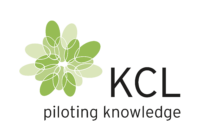Hey there! Have you ever thought about how recycled fibers are shaking up the textile world? They’re a big deal when it comes to sustainability. But here’s the catch: their stickiness can really make or break the recycling process. Testing how sticky these fibers are is super important. Why? Because it ensures they can be reused in new products without losing quality. This kind of testing helps us spot any hiccups early on, so we can tweak things and keep textile production as green as possible.
What are recycled fibers and why do they matter to you?
So, what exactly are recycled fibers? They’re made from old textiles or other fibrous stuff that’s been given a new lease on life. These fibers are key to making textiles more sustainable because they cut down on the need for new materials and help reduce waste. But here’s the thing: the properties of these fibers, like how strong, flexible, or sticky they are, really matter. They determine if the fibers are up to the task for different uses.
Stickiness is a biggie. It affects how fibers play nice with each other and with the machines during recycling. Too sticky? You might end up with clumps and blockages. Not sticky enough? The fibers might not hold together well, leading to weak products. So, getting a handle on fiber stickiness is crucial for keeping recycling quality high.
How does stickiness mess with the recycling process?
Let’s dive into this: stickiness in recycled fibers can really throw a wrench in the works. If fibers are too sticky, they can gunk up the machinery, causing jams and lots of maintenance headaches. This slows everything down and racks up costs. Plus, sticky fibers can clump, making the final product uneven, which isn’t great for quality or performance.
On the flip side, if fibers aren’t sticky enough, they might not bond well, resulting in weak or brittle materials that don’t pass muster. This can lead to more waste, as products might need to be tossed or reworked. So, finding that sweet spot of stickiness is key to making the recycling process smooth and ensuring recycled fibers are ready for new textile adventures.
How do we measure fiber stickiness?
Curious about how we figure out fiber stickiness? There are a few tests we use, each giving us a peek into their properties. One popular method is tackiness tests, which check how sticky fibers are by measuring the force needed to pull them off a surface. This helps us see how likely they are to stick to machines or each other during processing.
Another cool approach is thermal analysis, which looks at how fibers react to temperature changes. This can tell us about their melting point and viscosity, which are big factors in stickiness. By understanding these, manufacturers can make smart choices about how to handle and use recycled fibers.
How does stickiness affect product quality?
Here’s the scoop: the stickiness of recycled fibers directly impacts the final product’s quality. If they’re too sticky, you might see defects like clumping or uneven textures, which can mess with the product’s look and performance. This can lead to unhappy customers and more returns, which isn’t great for a company’s reputation or bottom line.
But if fibers aren’t sticky enough, the products might lack strength and durability, making them a no-go for certain uses. This limits what you can make with recycled fibers, cutting down their value and usefulness. So, keeping an eye on fiber stickiness is crucial for crafting high-quality, sustainable textiles.
How can we boost fiber stickiness?
Wondering how to up the stickiness game? There are a few tricks we can use. One is tweaking the chemical makeup of the fibers, adding stuff that boosts their stickiness without messing with other important traits like strength and flexibility.
Another tactic is fine-tuning the processing conditions, like temperature and pressure, to get fibers to stick just right. By controlling these factors, manufacturers can make sure fibers bond well during production, leading to top-notch products. Plus, cutting-edge tech like nanotechnology opens up new ways to improve fiber stickiness and broaden the horizons for recycled fibers.
The tech factor in recycling processes
Let’s talk tech: it’s a game-changer for recycling processes, especially when it comes to measuring and controlling stickiness. Advanced testing methods, like those from KCL, give us deep insights into recycled fibers’ properties, helping manufacturers make informed decisions on processing and use.
Plus, technology paves the way for new materials and processes that enhance stickiness and overall fiber quality. For instance, computer simulations and modeling can predict fiber behavior under different conditions, allowing manufacturers to fine-tune their processes for the best results. By harnessing technology, the textile industry can boost the sustainability and efficiency of recycling, paving the way for a greener future.
